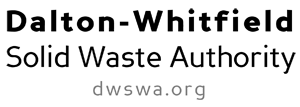24th Annual Conasauga River Watershed Cleanup
/Whitfield County and Murray County residents are invited to participate in the 24th Annual Conasauga Watershed Clean-up event on Saturday, October 27, 2018 to help keep local waterways clean at one of seven locations.
One of the largest local volunteer events in the community the annual Conasauga River Clean-up is hosted in partnership with several local non-profits, businesses, and environmental organizations during United Way’s Make a Difference Day.
Last year 290 volunteers picked up and removed more than 10,000 pounds of garbage from seven locations. “Volunteers that come out and participate are of all ages and walks of life so it is a wonderful opportunity to get to know other people while doing a service for your community.” Said Amelia Atwell, an event participant.
One of the six most biologically diverse freshwater river systems in the United States, the Conasauga River supports 24 endangered species and a dozen other imperiled species, including the Southern Pigtoe mussel and the Conasauga logperch, a fish found nowhere else in the world.
This year’s event takes place concurrently from 9:00 am to noon at seven different sites across both Whitfield and Murray counties. Be a part of the tradition by volunteering at one of the following locations:
1. Conasauga River at Carlton Petty Road bridge
2. Conasauga River at Highway 2 bridge
3. Conasauga River at Lower King’s Bridge and Norton Bridge
4. Holly Creek, Murray County, on the Chattahoochee National Forest
5. Mill Creek tributary in the City of Dalton
6. Coahulla Creek at Prater’s Mill
7. Lakeshore Park in the City of Dalton
Participants are encouraged to arrive early for on-site registration. Volunteers can expect to spend a couple of hours in the morning picking up trash and, depending on the location, removing invasive plants like Chinese privet. Volunteers should wear sturdy shoes or boots, long pants, and long sleeve shirts. Gloves, and trash bags will be provided at each site. T-shirts with this year’s river cleanup logo will be available on a first come first serve basis.
To learn more about the river cleanup call Keep Dalton-Whitfield Beautiful at 706-278-5001 or visit www.KeepDaltonWhitfieldBeautiful.org to download the event flyer with directions to each site. Join and share the event on Facebook page at www.facebook.com/KeepDaltonWhitfieldBeautiful.
Gretchen Lugthart, a long-time organizer of the event stated, “I think we have made some progress regarding people’s attitudes toward trash in this region, but until everyone respects our beautiful streams and rivers enough to dispose of trash properly, then we will have work to do.”
Event sponsors and organizers include: Shaw Industries, J+J Flooring Group, The Nature Conservancy, Rivers Alive, Dalton Utilities, United Way of Northwest Georgia, Dalton State College, Dalton-Whitfield Solid Waste Authority, Whitfield County Public Works, Conasauga River Alliance, Limestone Valley RC&D, US Forest Service, Keep Dalton-Whitfield Beautiful, Murray County and Whitfield County Extension, Keep Chatsworth-Murray Beautiful, and Murray County Public Works.


